The Heritage Of Berlin Street Art And Graffiti Scene
Art critic Emilie Trice has called Berlin “the graffiti Mecca of the urban art world.” While few people would argue with her, the Berlin street scene is not as radical as her statement suggests. Street art in Berlin is a big industry. It’s not exactly legal, but the city’s title of UNESCO’s City of Design has kept local authorities from doing much to change what observers call the most “bombed” city in Europe. From the authorities’ point of view, the graffiti attracts tourists, and the tourists bring money to a city deep in debt.
This article looks at the development of the Berlin street art scene, from its beginnings as a minor West Berlin movement in the late ’70s to its current status: the heritage of a now unified city.
The Development Of The Berlin Graffiti Scene
After the few East Germans who crossed the Berlin Wall in the ’80s blinked and pinched themselves, what do you think was the first thing they saw?
They saw big bubbly letters, spelling out words in German, English and French. They saw political slogans, either carved indelibly into the concrete or sprayed temporarily onto surfaces, commenting not only on the situation in Germany, but on the whole political world: “God Ble$$,” “Concrete Makes You Happy,” “Death to Tyrants.” As far as they could see, covering every inch of wall, was layer upon layer of zest, life and color.

If they’d crossed in the ’60s, however, they’d have been tempted to jump straight back. Abandoned buildings, derelict streets, piles of rubble — the immediate areas around the wall were reminiscent of World War II, and it would take another 10 years for the first communities to settle there.
Even then, those early settlers weren’t “real” Berliners, but outsiders: draft resisters, anarchist punks and Turkish migrants. They either opened businesses or formed squats and, with no resistance from the West German government, began turning walls into monuments to their own thoughts and beliefs.
By the end of the ’70s, a new wave of graffiti artists, arriving with innovations such as stencils and spray cans, were contributing genuine works of art. Our East German friends would have been staring not just at the defacement of Communist property, but at what graffiti artists had by then claimed as their Mecca.
After The Wall
After the collapse of the Berlin Wall, the graffiti artists marched straight into East Germany. Mitte, Friedrichshain, Prenzlauer Berg — all of the areas that the military had occupied became a new playground for the Western artists and became a new world for the Eastern artists who joined them. Few doubted that the East Germans’ work was weightier. It wasn’t that they were better artists, but that they could express — with authority — the one concept close to the hearts of all people now living in the city: what it meant to be free.
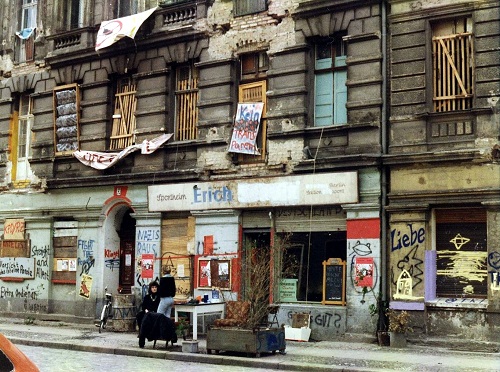
One East Berliner to make an impact during this period was “Tower.” With his name printed in a variety of colors and fonts on what looked like car stickers, people must have initially mistaken his work for advertising. But the more they saw it — on lamp posts, on post boxes, on trash cans, on fences — the more they understood what he was trying to communicate: Tower, as in the communist TV tower; Tower, as in the skyscrapers that dominated the skyline of almost every major city — built not for the people who lived there, but for the egos of the people who ran them. Tower’s aim was to reclaim the word as a symbol of strength and, in doing so, proclaim that the majority, not the minority, should be shaping the public space.

A Case Study: Linda’s Ex
In the summer of 2003, posters of a boy bemoaning the loss of his ex-girlfriend, Linda, began to appear on walls and fences in the Friedrichshain district. Sometimes he looked like a boy ready to kill himself; sometimes he looked like a man ready to kill. Whichever way the artist drew him, his sad eyes always asked passersby the same question: “Where’s Linda?”

At first, people either ignored the posters or were mildly curious. But as both the pictures and messages increased in intensity, they had no choice but to take notice. On one poster, Linda’s ex told his estranged lover that he would be waiting to speak to her at a certain bar every Saturday and Tuesday night. People were starting to believe that his suffering was real. And if his suffering was real, then they did not doubt that he needed help.

“He loves you, Linda” one person wrote in a newspaper ad.

A caller to a radio show wasn’t so kind. “He’s a cad,” the person said to Linda. “Don’t go back.”

Everyone seemed to have a point of view, and the more they expressed it, the more posters appeared.

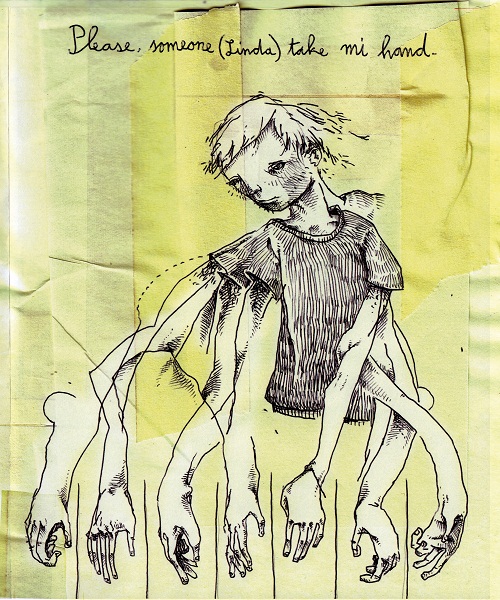
Finally, a year later, Linda’s Ex, the alias of artist Roland Brueckner, faced the public. There was no Linda, he confessed. The whole campaign had been a hoax.
The New Artists
Linda’s Ex was successful because he communicated with and responded to his audience almost every day. If he had stopped, even for a month, the public’s interest would have dissipated.
The critiques below examine the artwork of three Berlin street artists working today — maybe at this very moment. Like Linda’s Ex, XOOOX, Alias and Mein Lieber Prost make certain that their work remains in the public eye, constantly.
XOOOOX
“Berlin has the typical street art spots… but I like more the classical writing scene, with the huge street bombings and the masses of tags.”
To most people, the letters xoooox represent hugs and kisses. To XOOOOX, they represent symmetry and strength, for no matter how much he rearranges them, they remain a powerful signature that could belong to no one but him.
This tells XOOOOX’s public as much about him as they need to know: what you see is what you get. For instance, many people would like to believe that his black and white stencils are an ironic, anti-capitalist statement. But as the artist claims himself, they are a straight homage to the fashion world.
His fascination with fashion began when he discovered a pile of his parent’s old fashion magazines in the cellar. He would cut out parts of the pictures, mix them up and stick them on the walls of his room.
Collage still fascinates him, but he says that on the street, stencils are far more practical. At home, he creates a stencil from one of his fashion magazines — including everything from Harper’s to Vogue — and then, armed with his spray paint and stencil, he replicates the image on the streets.
Sample Of XOOOOX’s Work
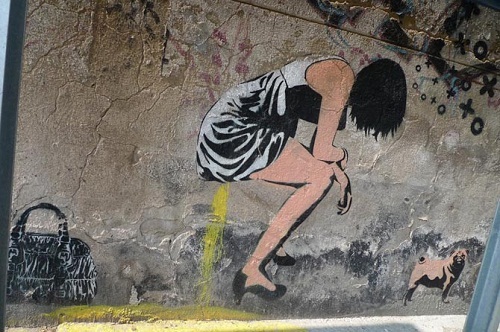
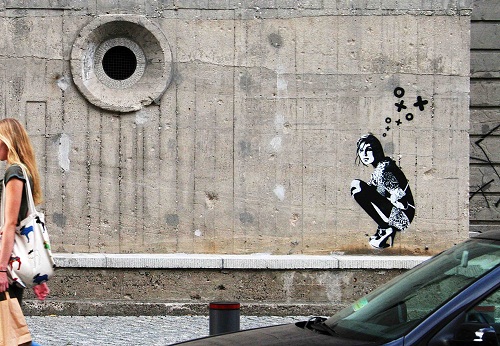

Analysis Of XOOOOX’s Work
People enjoy XOOOOX’s approach because of his objective treatment of his subjects, presenting each model as neither happy nor sad, neither warm nor cold. He even draws one model urinating on the ground; while some might interpret the piece as a sign of arrogance, XOOOOX’s signature, flowing from her head like a thought bubble, persuades sensitive observers to judge her on a more humane level. She is, he suggests, just like everyone else.
What sets her apart is her beauty. The artist highlights this by always spraying her image on the grayest and ugliest of concrete walls, amidst the most innocuous of graffiti scrawls. Like the pretty girl sitting alone in a bar, passersby rarely walk past without giving her a second glance.
Overall, XOOOOX’s images show an artist with a genuine appreciation of conventional beauty. In a scene that likes to subvert conventions, this must make XOOOOX the most unconventional artist working on Berlin’s streets today.
Alias
“My motives are often introverted and emotional, but… they brand… themselves on the memory of people passing. They are supposed to inspire people to interpret the motives on their own.”
Judging from the number of his pieces, Alias must rarely sleep. His artwork certainly suggests someone at odds with society: black and white pictures of hooded skater types staring at the ground, and young kids unknowingly sitting on live bombs. One senses that something is very wrong with Alias’ world.
Alias left school early and moved to Hamburg, a city with its own impressive array of street artists. Developing his skill there to an advanced level, he moved on to Berlin, where people soon recognized his work as among the best in the city.
Sample of Alias’s work
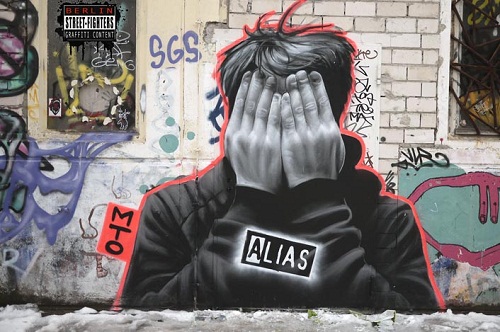
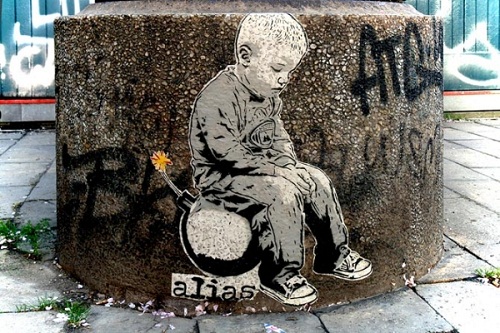
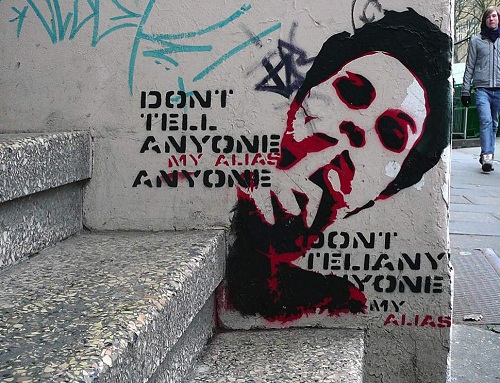
Analysis of Alias’s Work
Alias’ dark and somber images make him the city’s most serious artist. He stencils each of his pictures with great care, and always places them in a spot that best communicates his message. His picture of a man asking people to keep his identity a secret is stuck not on the wall of a busy thoroughfare, but at the bottom edge of a staircase. It gives the impression that, beyond the playfulness, he genuinely wants to keep his identity a secret.
Alias’ signature then is essential to understanding his work. The picture of a hooded teenager with a blank face communicates a need to give outsiders a voice. The irony is that the one person humane enough to give them that voice, a street artist, has to remain anonymous. That, Alias suggests, is his reward for daring to question society.
Mein Lieber Prost
“All that’s come out is a result of my happiness, my courage, my fantasies or my disappointments. All great artists are great not for their technique, but their passion.”
Most people will walk by graffiti without even noticing it. It hides in the corners of doorways and blends in with its surroundings. Prost’s characters, however, point and laugh directly at passersby. The characters are often a simple black outline. On occasion, Prost takes the time to fill the characters in with red, white and black. Whatever the method, he places his artwork in just about any free spot he can find: side streets, high streets, advertisements, doorways, signs. Nowhere in the city is safe.
And yet the public knows little about the artist himself. For legal reasons, he safeguards his identity. At a more artistic level, the anonymity enables him to present the smiley faces, and not himself, as the essence of his work.
Sample of Mein Lieber Prost’s Work



Analysis Of Mein Lieber Prost’s Work
It’s easy to miss the point of Prost’s smiley faces. On the surface, they look like the simple one-minute doodles of a high-school student. And the artist probably drew them in half that time. But that simplicity is what makes Prost’s faces so interesting, for two reasons.
First, it allows Prost to put his images in places that few other artists would dare to go. Alias, for example, needs time to place and spray his images and, therefore, works in more secluded spots to decrease the chances of getting caught. Prost has only to draw a quick outline, and then he’s finished. In fact, he has now drawn so many that he no longer needs to leave his signature: his work, rather than his name, has become his identity.
Secondly, the artist positions his characters to look like they are taking in their surroundings, laughing aloud at something happening right at that moment. It is natural, then, on seeing Prost’s characters pointing at them, for people to wonder what the joke is, asking themselves: is it me? Each character forces passersby to question their surroundings and (hopefully, if they don’t want to leave paranoid) to find a satisfactory answer.
Moving Into The Mainstream
Visitors to Berlin tend to ask the same question: is the street art legal? It is a difficult question for Berliners to answer. In central parts of the city at least, there is variously so much and so little criticism directed at it that no one quite knows. Head of the anti-graffiti team, Chief Detective Marko Moritz, insists, however, that the city views graffiti as a crime.
In an interview with The Local newspaper, he states that his team’s main goal is to catch the tagging crews whose work has its roots not in art, but in gang culture. In what he calls bombings, crews will spray whole trains and sometimes buildings with their signatures and colors. But Moritz is concerned not only with the defacement of public property; some crews, he claims, are starting to carry firearms.
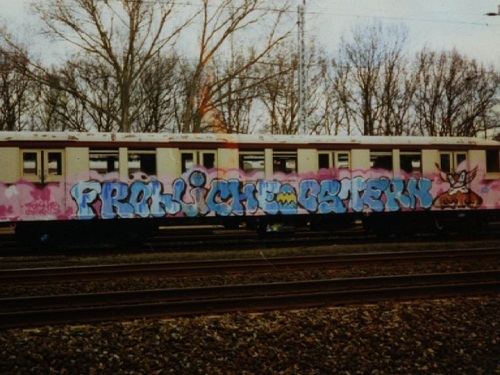
Their behavior, while disturbing, is a byproduct of the authorities’ attempt to turn the street art scene into an industry. When UNESCO named Berlin as a City of Design, few people doubted that the thriving street art scene was partly responsible. Local businesses and even local authorities hired artists to paint murals on the fronts of their buildings. Most famously, on a wall in Kreuzberg, the artist Blu painted two men trying to rip each other’s masks off — symbolizing, he claims, Berlin’s struggles during its first few years of reunification.
Today, such work has made the street art a tourist attraction. Kunsthaus Tacheles, once an artists’ squat and still a focal point of the scene, holds disco nights downstairs and sells urban art books upstairs — its bar is as expensive as anywhere in the city. Artists such as XOOOOX, Mein Lieber Prost and Alias have started to exhibit and sell in galleries. They still work on the street, but they are no longer impoverished artists — if they ever were. They can afford to travel and work in countries across the world.
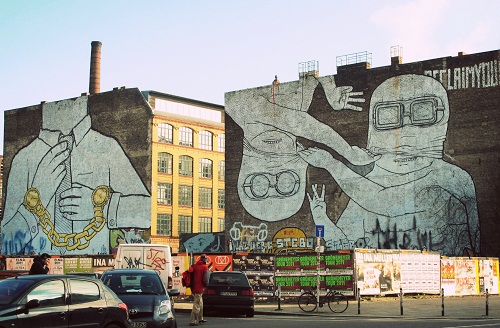
While these artists believe that street art needs to appeal to a wider audience, the local, more traditional artists, such as the tagging crews, disagree. They argue that street art derives its power from being on the margins of society; only from the outside can they address problems within it. That difference of opinion is opening a space in the scene that can be filled only by the mainstream. In the next few years, street art has the potential to become a social movement as inclusive as anything from the ’50s and ’60s.
Further Reading
- 40 Stunning and Creative Graffiti Artworks
- Tribute To Graffiti: 50 Beautiful Graffiti Artworks
- Urban Art Tutorial in Photoshop and Illustrator
- Graffiti and Hand-Written Signs






 Flexible CMS. Headless & API 1st
Flexible CMS. Headless & API 1st

